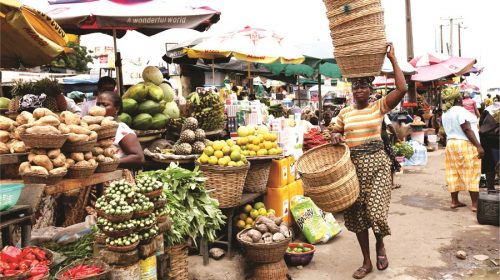Nigeria produces 5.7 million tons of rice… Inches close to self-sufficiency

The total paddy production in Nigeria in 2016 has been estimated at 17,487,562 metric tons, leaving a balance of about 11.4 million metric tons after accounting for 12.4 per cent of rice production wasted due to post-harvest losses. This left a total of 5.7 million metric tons of milled rice, bringing Nigeria’s rice production closer to the 7 million projected milled rice requirement for 2016.
This was contained in a report by Growth and Employment in States (GEMS4), a programme funded by the United Kingdom Department for International Development (DfID), released on April 2017. In the report titled “Mapping of rice production clusters in Nigeria,” GEMS4 revealed that 18 states were selected based on their contribution to national production as per the 2015 Agricultural Production Survey (APS). In those 18 states, rice farming was described as widely spread across 165 clusters and 2,812 sub-clusters.
“The 2016 total paddy production estimate is put at 17.5 million tons with a marketing surplus (after post-harvest losses and domestic use) of 11.4 million tons (equivalent to 5.7 million tons milled equivalent), just below the total national demand for rice which was projected to reach 7 million in 2016. This implies that the country is progressing towards its goal of rice self-sufficiency,” the report stated.
Kebbi State was leading at 3.56 million metric tons for the wet and dry seasons production combined, followed by Kano at 2.82 million metric tons. Kebbi produced 2.05 million metric tons in the wet season and 1.51 million metric tons in the dry season while Kano produced 1.86 and 0.96 million metric tons during the wet and dry seasons respectively over the same period under review. However, only 10 of the 18 states were involved in the dry season production, adding the 26.57 per cent of the total production.
According to the report, GEMS4 embarked upon a mapping exercise of rice production clusters through researchers’ and enumerators’ visits to rice production locations in 18 states, namely: Bauchi, Benue, Ebonyi, Ekiti, FCT, Jigawa, Kaduna, Kano, Katsina, Kebbi, Kogi, Kwara, Nassarawa, Niger, Ogun, Sokoto, Taraba and Zamfara.. The researchers expressed optimism that information of paddy production clusters will support the development of supply chains from nearby rice clusters around existing commercial rice mills or proposed new plants in the country.
A cluster, in this study, was defined as “an agglomeration of various rice production communities or sub-clusters , located around specific geographic production continuum, sharing some natural resources, such as water and flood plains.” The findings by GEMS4 reveal the responses of states to the federal government’s policy goal of reducing import dependence, particularly of rice which drains about $1billion daily on importation. The report also stated that 10 per cent of total arable land in Nigeria is used for rice cultivation and, although Nigeria is the largest producer of rice in West Africa, it is the second largest importer of rice globally.
GEMS4 report’s analysis indicated a dry season production of 4,646,296.64 metric tons or 26.57 per cent, cultivated on 3,037,324 hectares of farmlands and wet season production of 12,841,265.18 metric tons or 73.43 per cent, cultivated over 859,624 hectares. It also showed that 1.43 million rice farmers were involved in the wet season, representing 17.7 per cent of farming families in the wet season in Nigeria. In the dry season, however, the estimated total number of farmers was 410,210, representing only 5.1 per cent of the total farming families.
A conspicuous finding on the average yield per hectare was that the yields during the dry season were consistently and comparatively higher than in wet seasons for all states involved in both wet and dry season cultivation, which opens an area of great prospects for policy intervention in rice production in Nigeria. The average yield per hectare of rice during the wet season was found to be the highest in Ebonyi, at 5.63 metric tons but lowest in Kwara at 2.68. For the dry season, Niger recorded the highest average yield per hectare of 6.45 metric tons while Kaduna had the least average yield per hectare of 3.5 metric tons.
GEMS4 report, however, listed the potential for increasing productivity, pointing out that 13 per cent of farmers reported using high-yielding planting method (transplanting seedlings), while 32 per cent used irrigation and 56 per cent had access to one hectare of additional land. The report listed the challenges observed as including finding that farmers generally reported having difficulties acquiring agro-inputs, particularly quality seed and fertiliser and accessing credit.
Infrastructure such as irrigation facilities, feeder roads and storage facilities constituted an area of challenge with poor quality or a total lack of it. Others include flooding in wet season, poor access to information on modern methods of farming and post-harvest technologies, poor access to credit, and a loss of labour through migration of young people to cities, resulting in aging farming population. Considering the value of rice produced locally, farmers in the 18 states under consideration have generated an estimated N102.6 billion as additional contribution







Leave a Reply